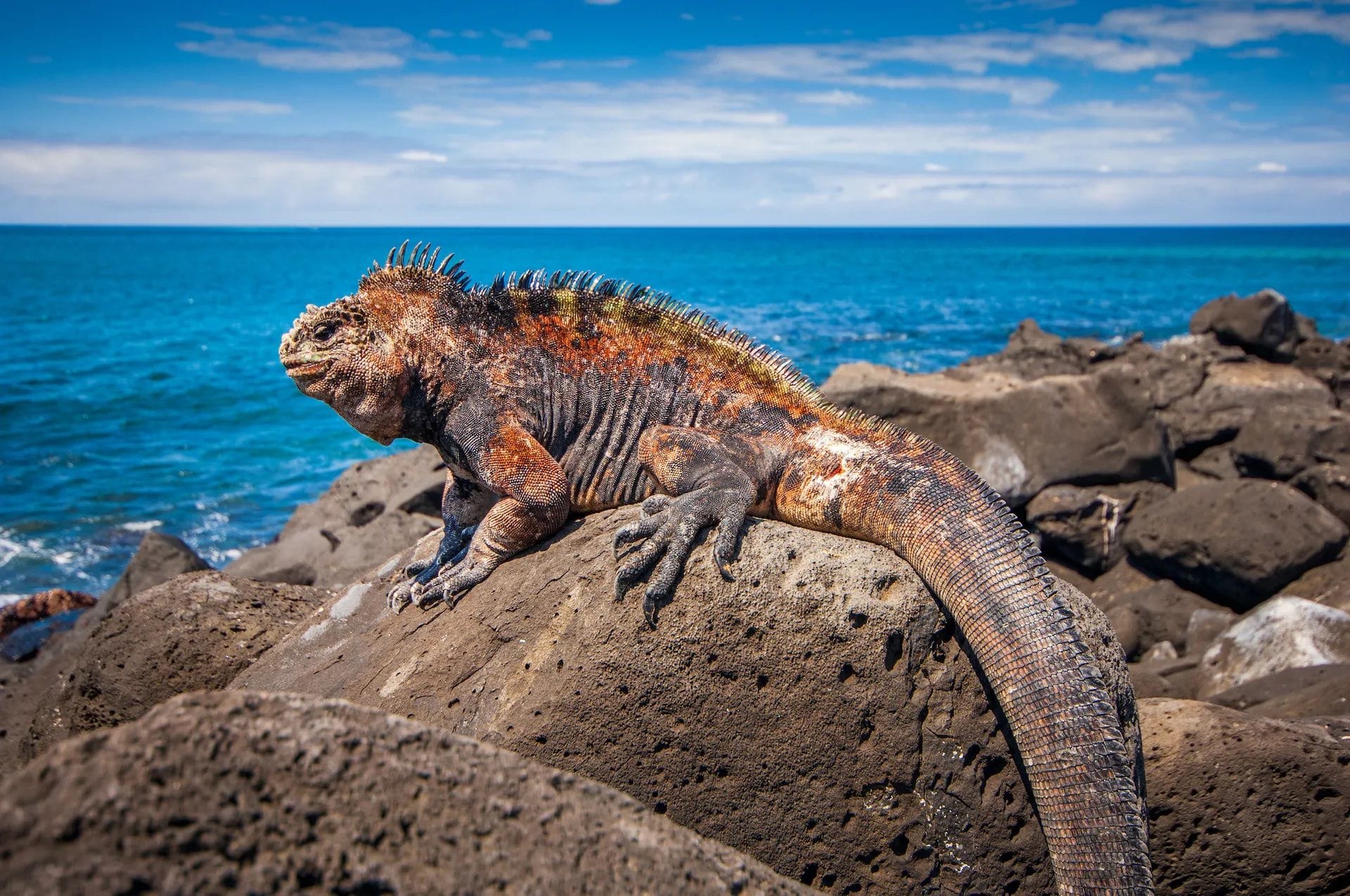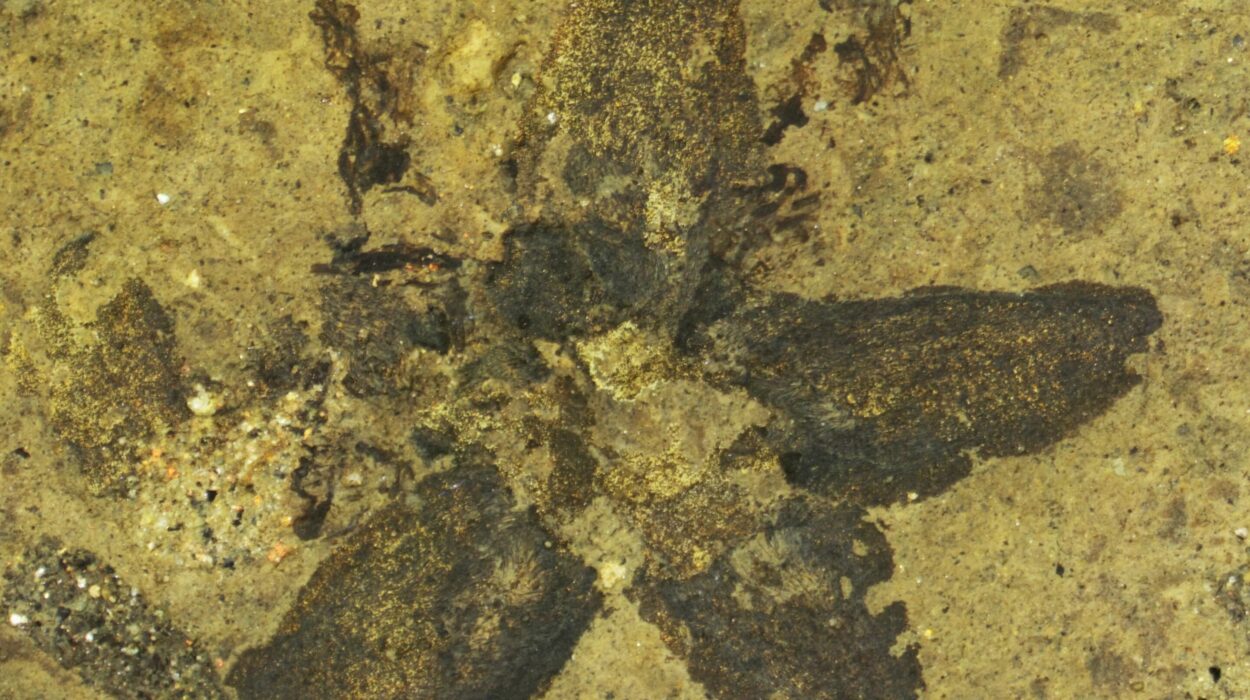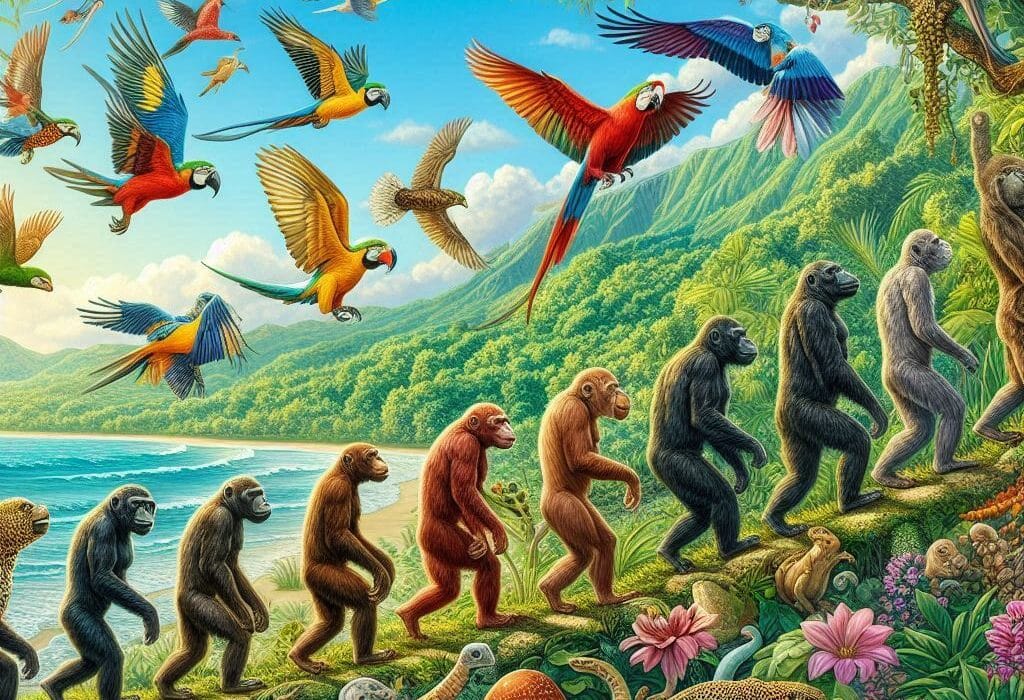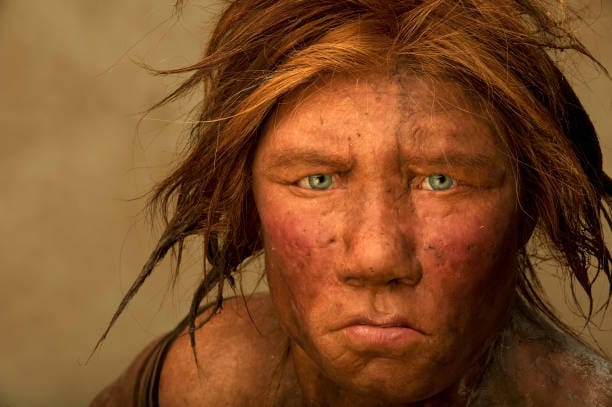Across the vast oceans of Earth, scattered like emeralds in sapphire seas, lie the islands—places both isolated and enchanting. From the Galápagos to the Seychelles, from Madagascar to Hawaii, these fragments of land have long fascinated explorers, poets, and scientists alike. There is something hauntingly beautiful about islands: the way their shorelines cradle ancient mysteries, how their jungles hum with species found nowhere else on Earth, and how evolution seems to run faster, wilder, and stranger here than anywhere else.
Charles Darwin himself was forever changed by his voyage to the Galápagos Islands in 1835. The subtle differences he observed among mockingbirds and finches from one island to another would quietly spark a theory that changed the world: the theory of evolution by natural selection. But why is it that islands, more than continents, seem to unlock evolution’s secret doors?
Islands, it turns out, are not just land surrounded by water. They are crucibles of change—natural laboratories where evolution experiments boldly, unburdened by the rules of the mainland. In isolation, life rewrites its own rules.
The Geography of Isolation
To understand why islands are evolution hotspots, one must first understand their profound isolation. Most islands begin as volcanic eruptions or fragments torn from continental shelves. Whether born in fire or drifted away by tectonic force, they emerge in solitude, surrounded by endless ocean. Reaching them is not easy. Seeds must float or fly. Animals must swim or ride the wind. Many never make it. Those that do arrive—by accident, storm, or miracle—find themselves in a world apart.
This isolation limits immigration and emigration. Once organisms arrive, they are cut off from the vast gene pools and ecosystems of the mainland. Populations become small, and genetic drift takes over. Over time, as generations pass, even the same species can split into entirely new forms, adapting to their unique surroundings in extraordinary ways.
Islands act as evolutionary greenhouses. The gene flow from outside is minimal, so any mutation or advantageous trait that arises within the population spreads quickly. Natural selection doesn’t just shape these populations—it sculpts them with urgency and creativity. Here, evolution speeds up and branches out in directions unthinkable on continents.
The Founder Effect and Genetic Bottlenecks
One of the foundational mechanisms behind island evolution is what biologists call the “founder effect.” Imagine a single pregnant lizard washing ashore after a storm. She may carry only a fraction of the genetic variation present in her ancestral population. Her offspring will inherit just that small genetic palette. This narrow gene pool means that rare traits can quickly become common, and mutations that might be insignificant elsewhere can define the destiny of an entire island population.
Closely related to this is the phenomenon of genetic bottlenecks. Events such as hurricanes, volcanic eruptions, or droughts can drastically reduce the population of a species on an island. The survivors may not be representative of the original gene pool, leading to rapid evolutionary divergence. The smaller the population, the more intense the evolutionary pressure, and the more unique the evolutionary path.
These two forces—founder effects and bottlenecks—often result in high levels of endemism. That is, island species are found nowhere else on Earth. In fact, islands make up less than 5% of Earth’s land area, yet they are home to over 20% of all terrestrial species. The Galápagos alone hosts species like the marine iguana, flightless cormorant, and giant tortoise—creatures that have no close equivalents elsewhere.
Adaptive Radiation: The Evolutionary Explosion
One of the most striking outcomes of island evolution is a process known as adaptive radiation. This is when a single ancestral species rapidly diversifies into multiple new forms, each adapted to a different niche. Islands, with their limited competition and unoccupied ecological roles, are prime real estate for this kind of diversification.
Perhaps the most famous example comes from Darwin’s finches. Though they likely evolved from a common ancestor, these birds now exhibit a remarkable range of beak shapes and sizes, each adapted to a specific diet—cracking seeds, probing cactus flowers, or catching insects. On the mainland, such differentiation would be stifled by competition. But on the Galápagos, with few rival birds, evolution had space to explore every possibility.
Adaptive radiation isn’t limited to birds. In Hawaii, a single colonizing insect species can diversify into dozens of forms—each with its own coloration, behavior, and habitat preference. In Madagascar, lemurs radiated into an astonishing array of species, from the tiny mouse lemurs to the charismatic ring-tailed lemur—all from a single ancestor that arrived millions of years ago.
This explosion of forms is a testament to nature’s ingenuity. Islands strip away the clutter of continental ecosystems and give evolution a blank canvas. What emerges is a gallery of life’s creativity, painted over millennia.
Gigantism and Dwarfism: Nature’s Evolutionary Twists
One of the strangest and most enchanting features of island evolution is the tendency toward gigantism and dwarfism. On islands, elephants shrink, and rodents grow enormous. Why?
In the absence of predators or competitors, evolutionary pressures shift. On the mainland, large body size may help an animal escape predation. But on an island with no predators, that same size becomes a liability—it requires more food and energy. Thus, species like elephants can evolve into dwarf forms, as seen with the pygmy elephants of Sicily or the diminutive Stegodon of Southeast Asian islands.
Conversely, small animals like rodents or reptiles may become larger on islands. This phenomenon, known as island gigantism, can result from a lack of competitors or predators. Giant tortoises of the Galápagos and Aldabra islands, or the now-extinct giant flightless birds like the dodo of Mauritius and the moa of New Zealand, exemplify this tendency. Without pressure to stay small or flee from predators, these species evolve in directions rarely seen on the mainland.
Island ecosystems, in essence, relax certain evolutionary constraints while amplifying others. The result is a bizarre and beautiful bestiary of extremes.
Flightlessness and Lost Defenses
Islands not only shape body size—they alter behavior and abilities. One common pattern is the evolution of flightlessness in birds. When predation pressure is low, flight becomes unnecessary and energetically costly. Birds that don’t need to fly may develop smaller wings and lose the ability altogether.
This pattern is evident in the flightless rails of the Pacific islands, the now-extinct dodo, and even the Galápagos cormorant. On continents, flight is a lifesaving necessity. On islands, it becomes an evolutionary burden.
Similarly, island species often lose other defenses. Mammals may become tamer, plants may shed their toxins or thorns, and animals may become diurnal despite being nocturnal on the mainland. These evolutionary relaxations make island species vulnerable to human intrusion and invasive predators.
Evolution, it turns out, does not predict the future. It only responds to the present. And when the present suddenly changes—say, with the arrival of humans—these specialized species can face catastrophic consequences.
Extinction in Paradise: The Double-Edged Sword of Isolation
For all their richness, island ecosystems are fragile. The very forces that drive their evolutionary uniqueness also make them vulnerable to extinction. Limited ranges, small populations, and a lack of defenses create a perfect storm when foreign species are introduced.
The history of island colonization is riddled with tragedy. When Polynesians arrived in Hawaii and New Zealand, they brought rats, pigs, dogs, and fire. Birds that had never faced predators quickly vanished. European colonization accelerated the destruction. Over 90% of Hawaii’s native birds have gone extinct or are threatened. The dodo, once abundant in Mauritius, was wiped out within decades of human arrival.
Invasive species are often the culprits. Rats eat the eggs of ground-nesting birds. Cats and dogs hunt naive mammals. Even harmless-looking plants can outcompete endemic vegetation, altering habitats irreversibly.
Habitat destruction, climate change, and disease have added to the onslaught. Islands, which once served as sanctuaries of evolution, now stand as ground zero for the biodiversity crisis. They hold the greatest concentration of endangered species on Earth.
Human Impact and the New Face of Island Evolution
Despite the tragedies, there are stories of hope. Conservationists and scientists are racing to protect what remains. Captive breeding, invasive species removal, habitat restoration, and biosecurity measures have helped save species like the Mauritius kestrel and the California Channel Island fox.
Intriguingly, human presence is now becoming a force in island evolution. Some island species are evolving rapidly in response to cities, agriculture, and tourism. Anole lizards in the Caribbean have developed longer limbs and better grip on urban surfaces. Birds in the Galápagos are altering nesting behavior in response to human disturbance.
While we mourn the loss of species, we also witness evolution in real-time. The question is no longer whether humans influence island evolution—we do. The question is whether we can learn to influence it responsibly.
The Scientific Legacy of Island Evolution
Islands have shaped the course of scientific history. From Darwin’s finches to modern genomics, they continue to serve as natural laboratories for studying how life changes over time. Biogeography—the study of species distribution—owes much of its development to island studies. The theory of plate tectonics was enriched by understanding island chains. Evolutionary developmental biology, or “evo-devo,” draws insights from island radiations.
The simplicity of island ecosystems allows scientists to test hypotheses about ecological niches, species interactions, and genetic divergence. The genomes of island species, often more streamlined or rearranged than their mainland counterparts, provide clues about how organisms adapt and specialize.
Islands also reveal the interplay between ecology and evolution. They show how geography shapes destiny, how chance and necessity dance in the forging of new species, and how life adapts not just to survive, but to thrive in strange, novel ways.
Why Islands Matter More Than Ever
As sea levels rise and climates shift, the fate of islands hangs in the balance. But the lessons they offer are more urgent than ever. Islands are microcosms of Earth’s biosphere—smaller, simpler, but facing the same pressures. Their stories foreshadow what may happen to larger ecosystems if we continue our trajectory unchecked.
Island evolution teaches us humility. It reminds us that life is both fragile and resilient, that beauty can emerge from constraint, and that diversity is not just a feature of the natural world, but its very engine.
In a time when extinction headlines are common, islands still whisper tales of hope. In remote archipelagos and windswept atolls, species are adapting, radiating, and finding new ways to live. And with human help, some may continue to do so.
The Eternal Dance of Isolation and Innovation
In the grand theater of evolution, islands are the avant-garde stages. Here, nature performs its boldest experiments. From lizards that glide to birds that forget how to fly, from forests teeming with endemic orchids to caves harboring eyeless fish, the evolutionary imagination runs wild.
Why are islands evolution hotspots? Because they isolate, challenge, and liberate. They push life into corners, force it to innovate, and reward those who adapt.
In these remote patches of land, we see evolution not as an abstract theory, but as a living, breathing, shape-shifting force. We see the power of natural selection, the play of chance, and the beauty of adaptation.
Islands are not just places on a map. They are metaphors for change. They show us that even in isolation, even against the odds, life finds a way—not just to persist, but to dazzle.






